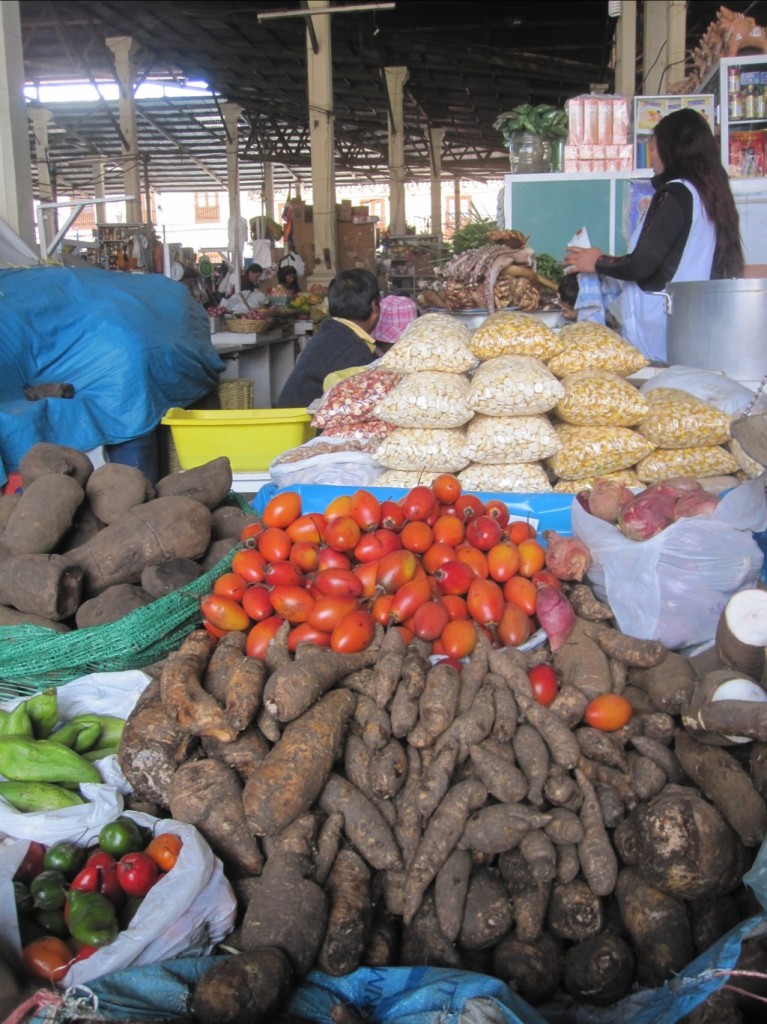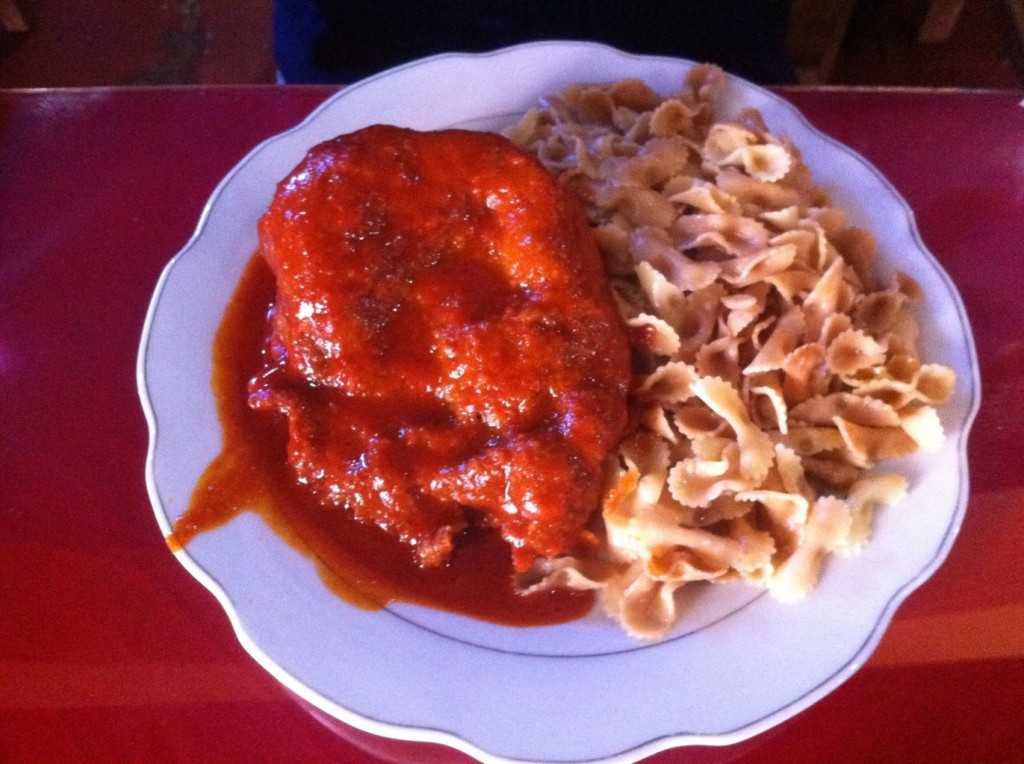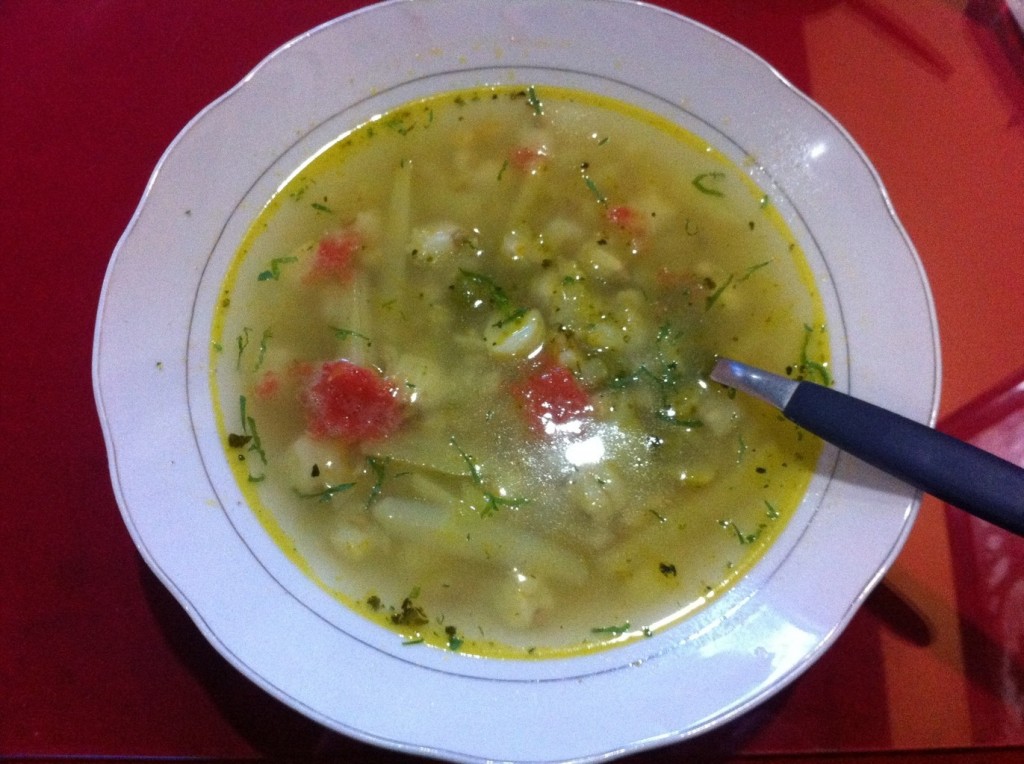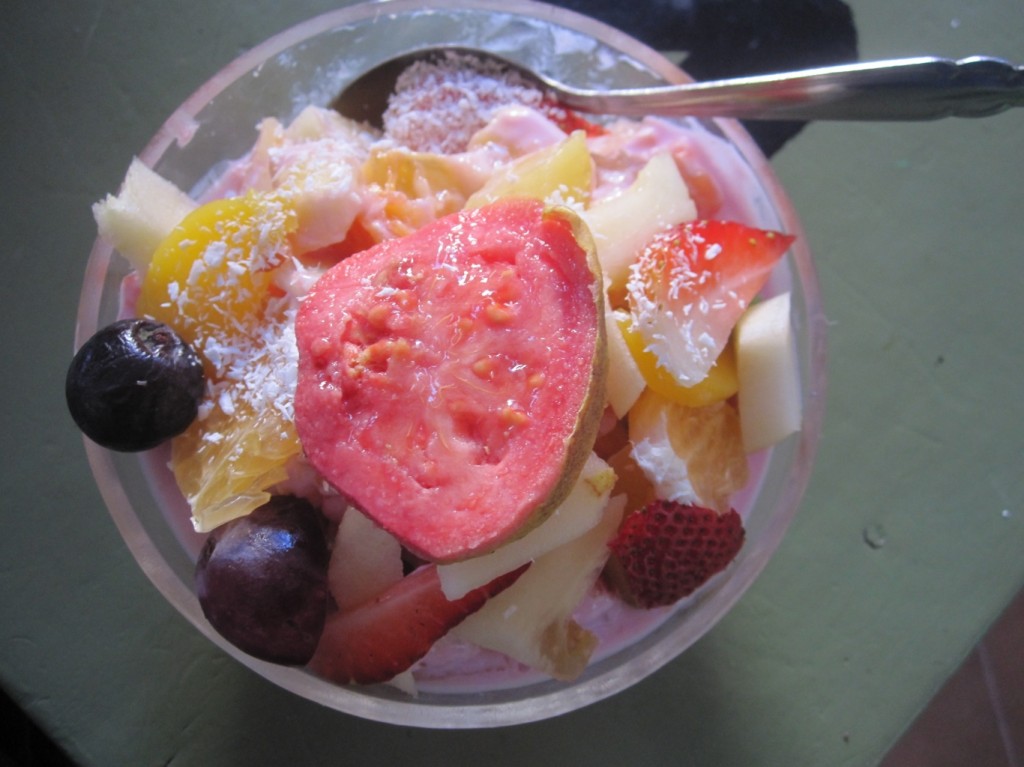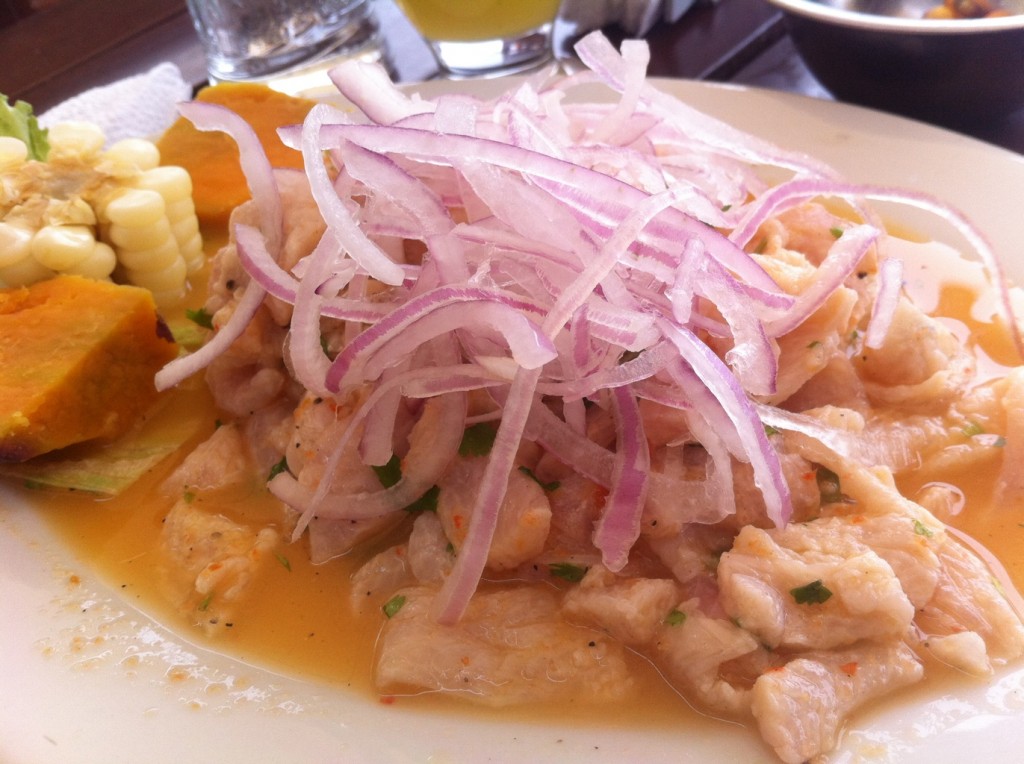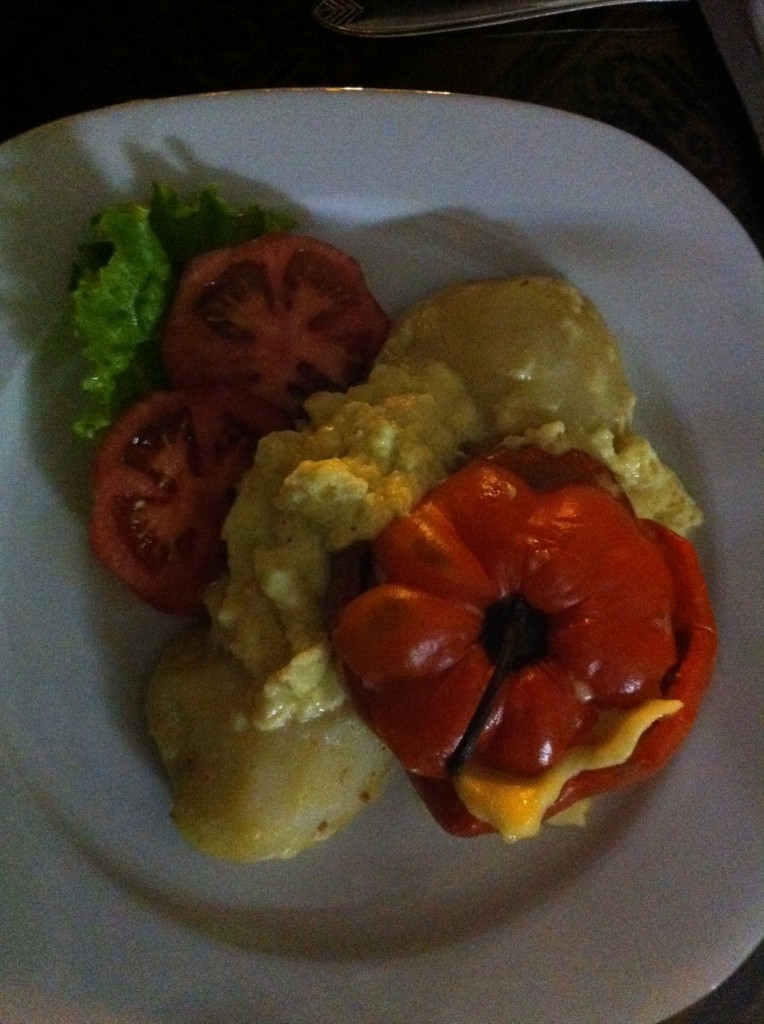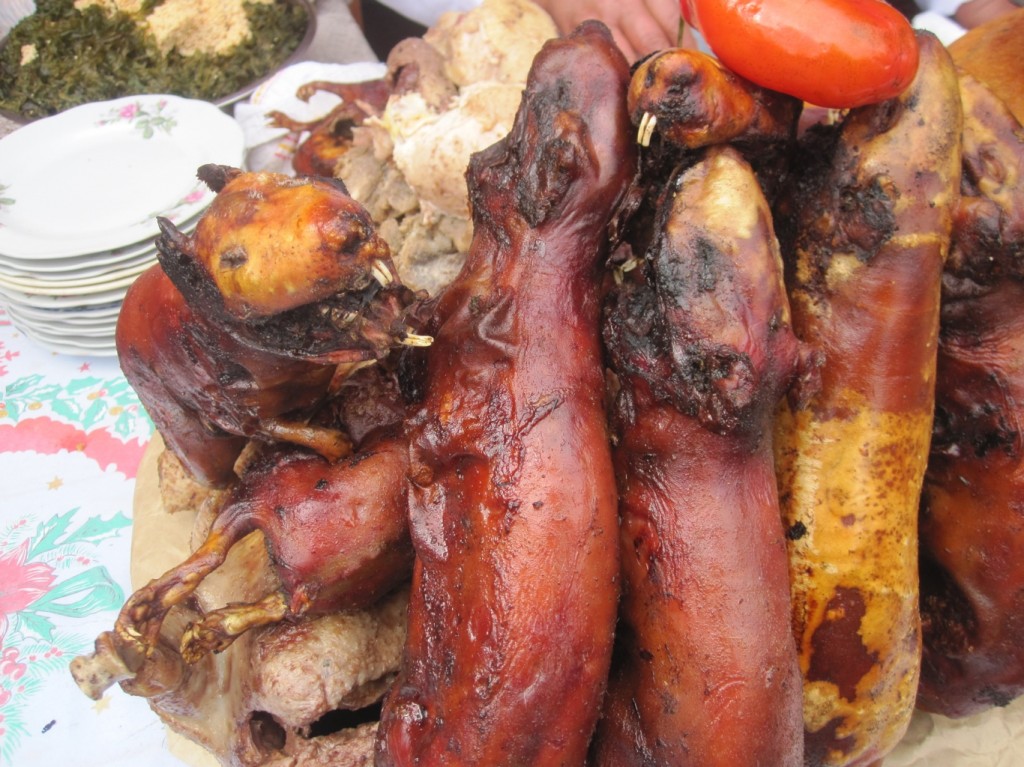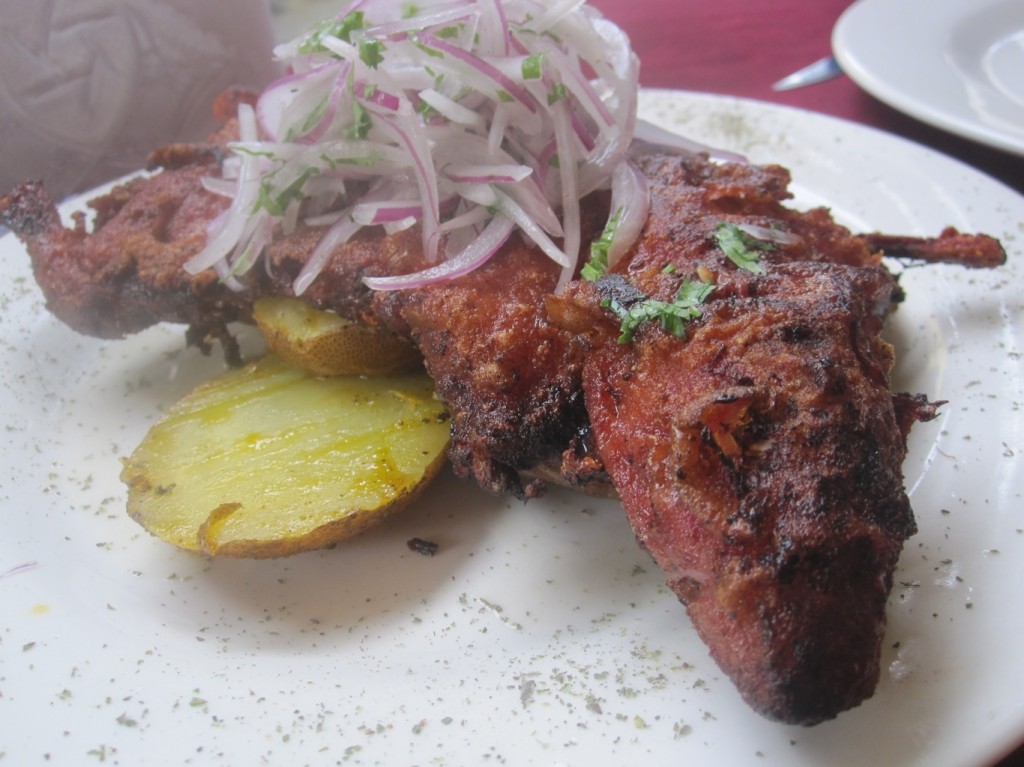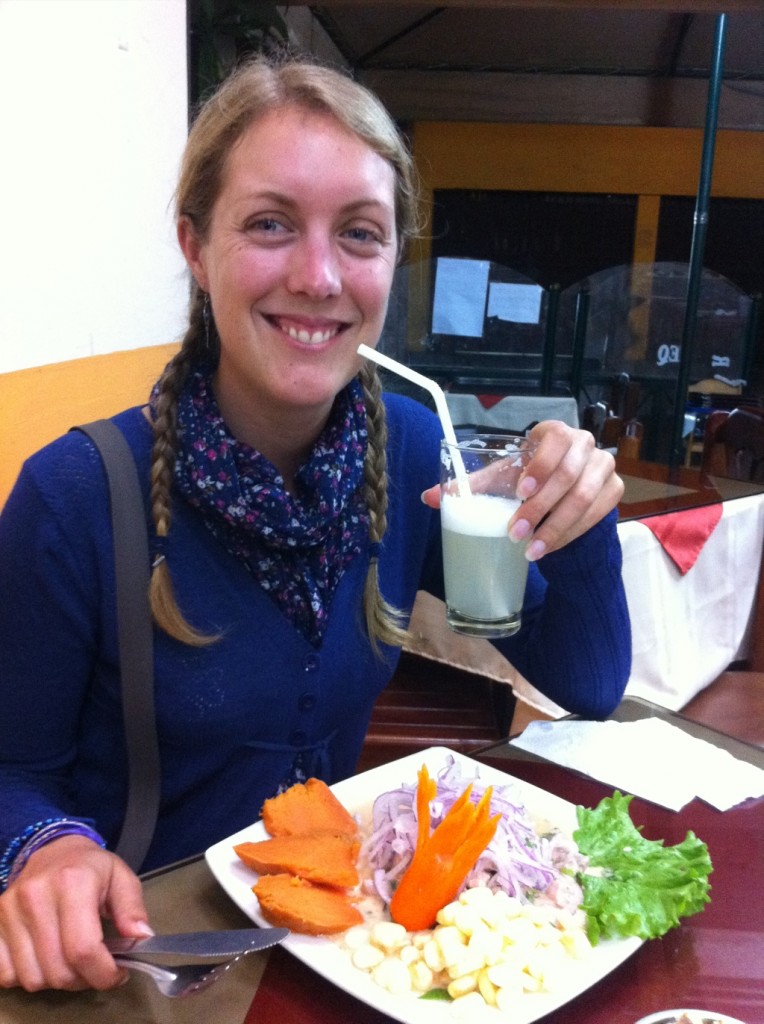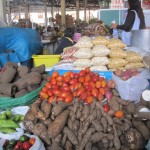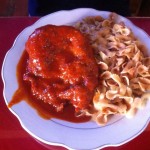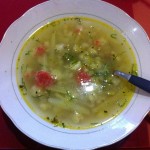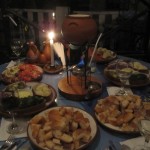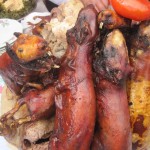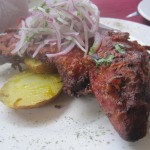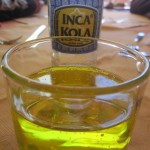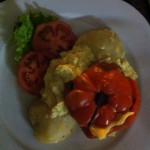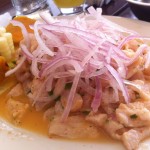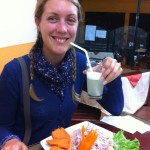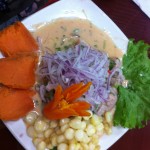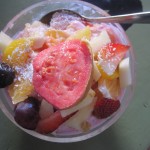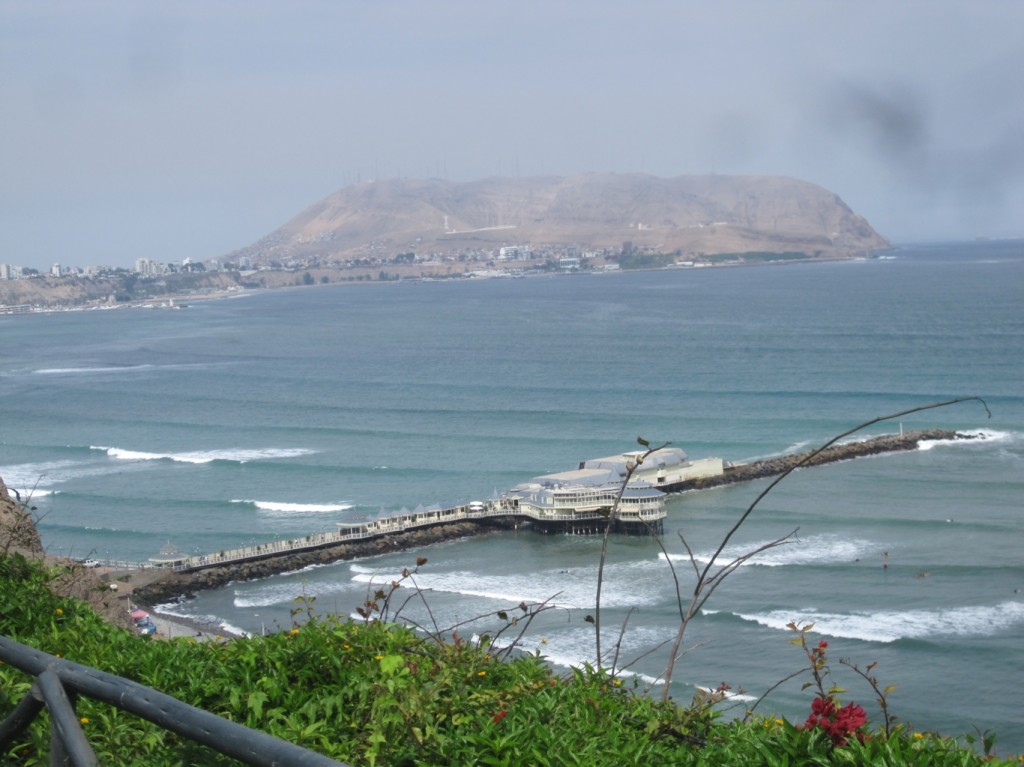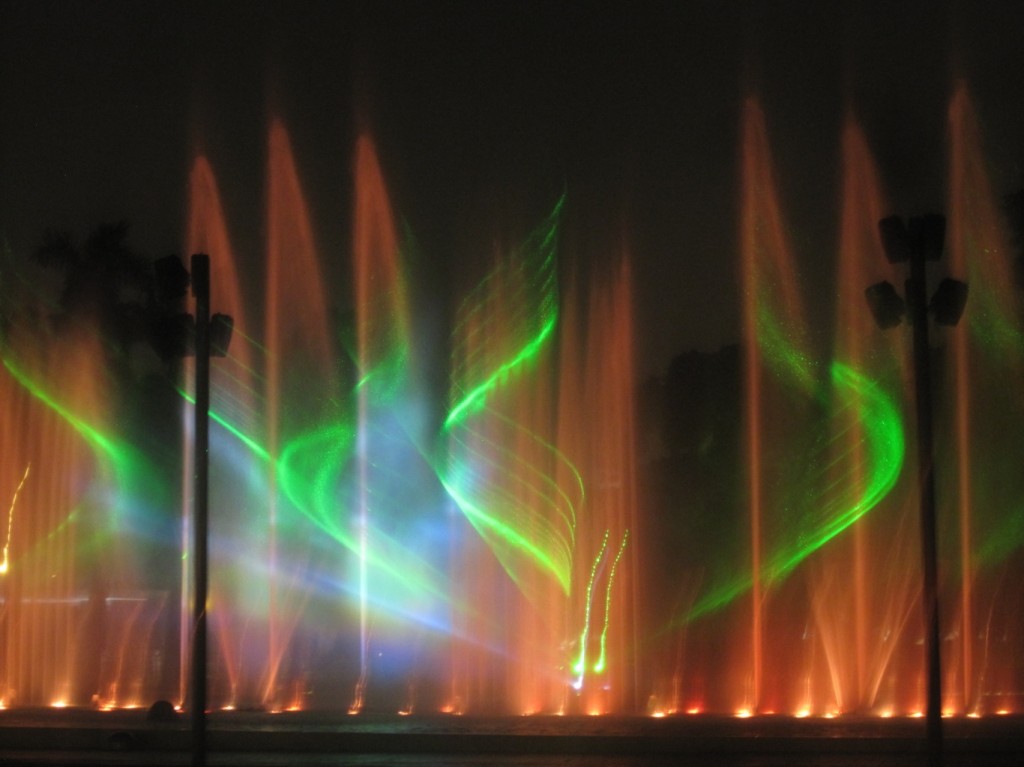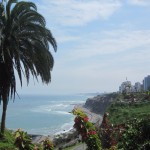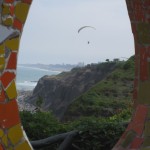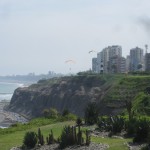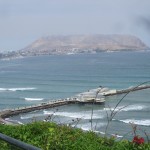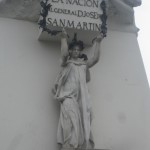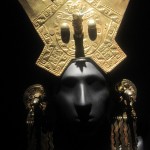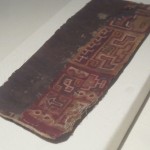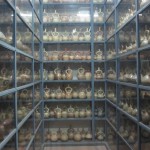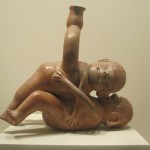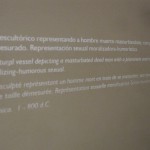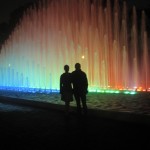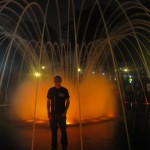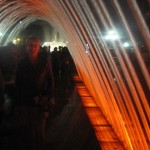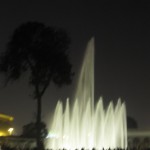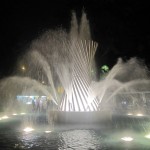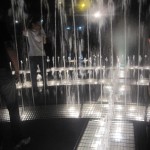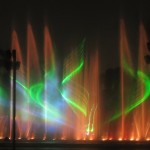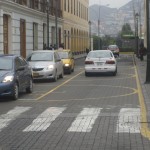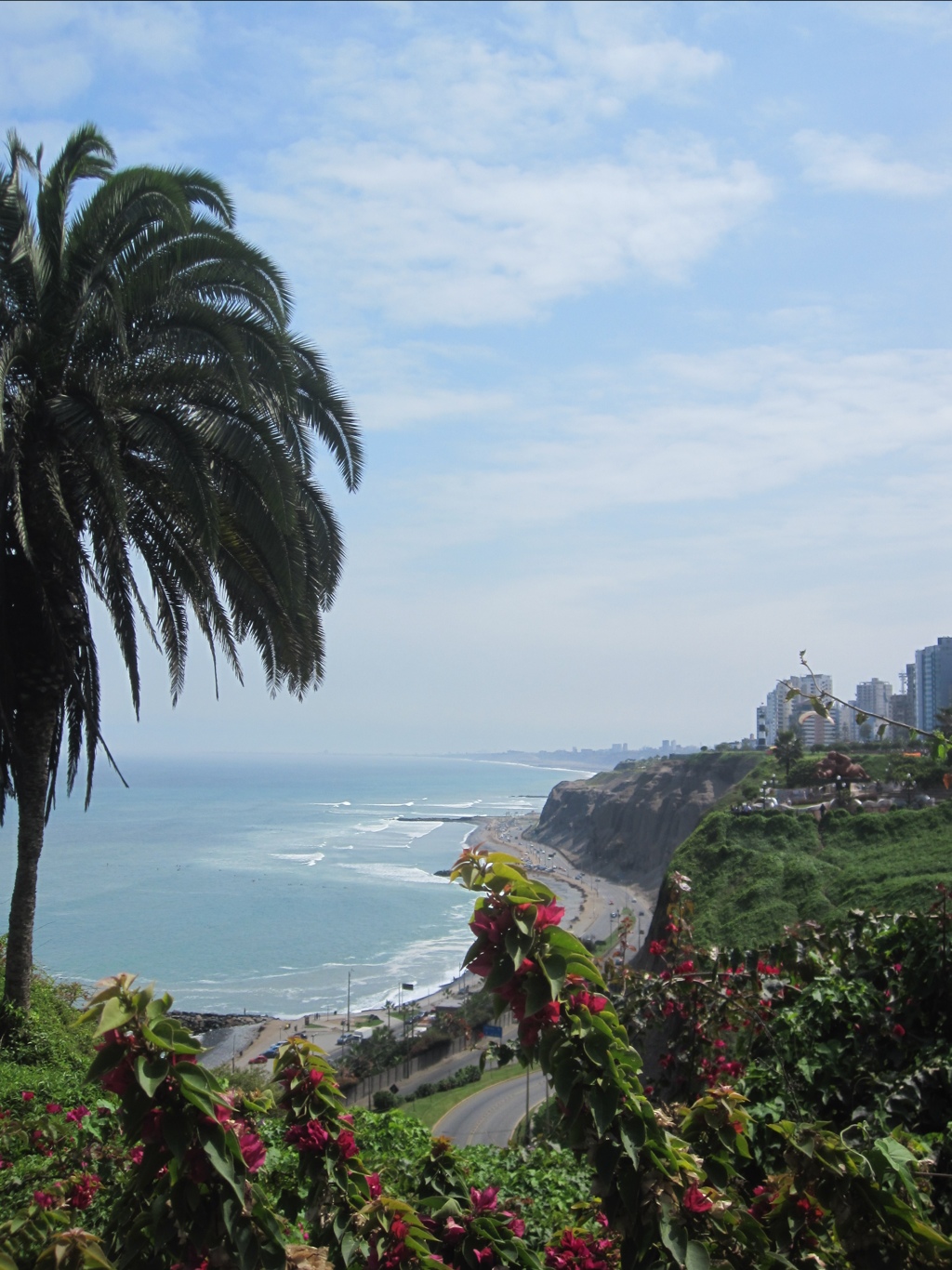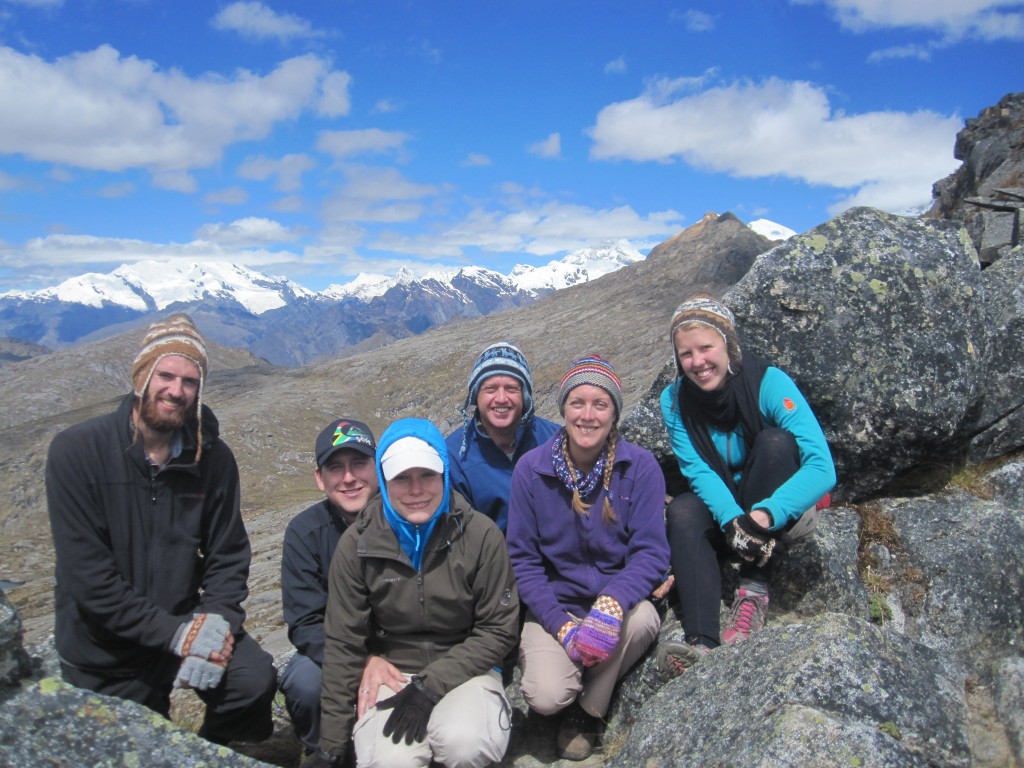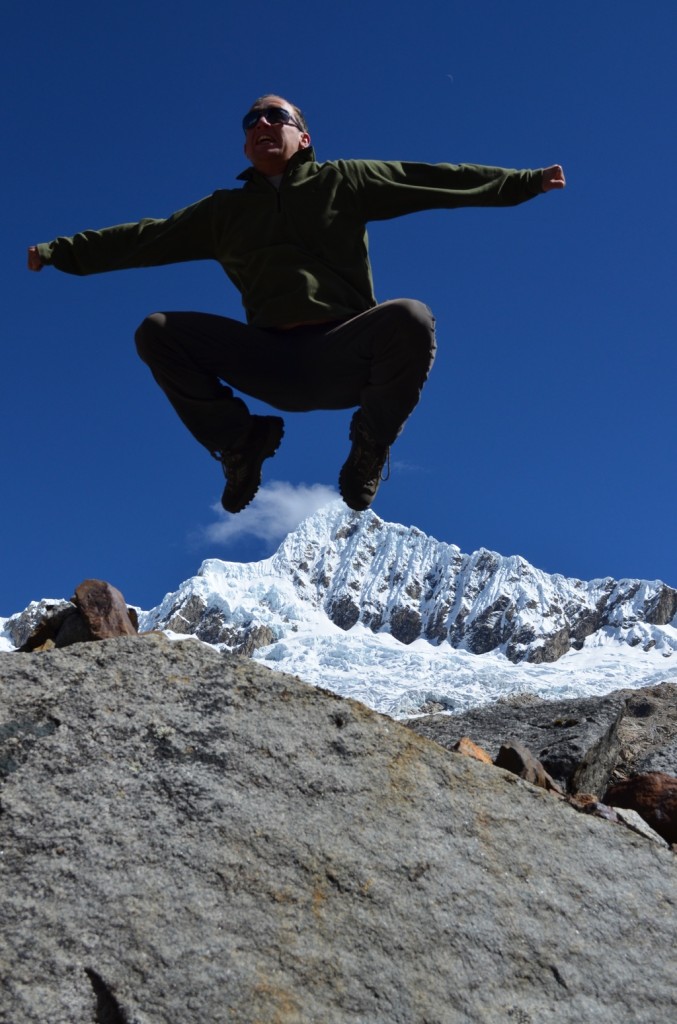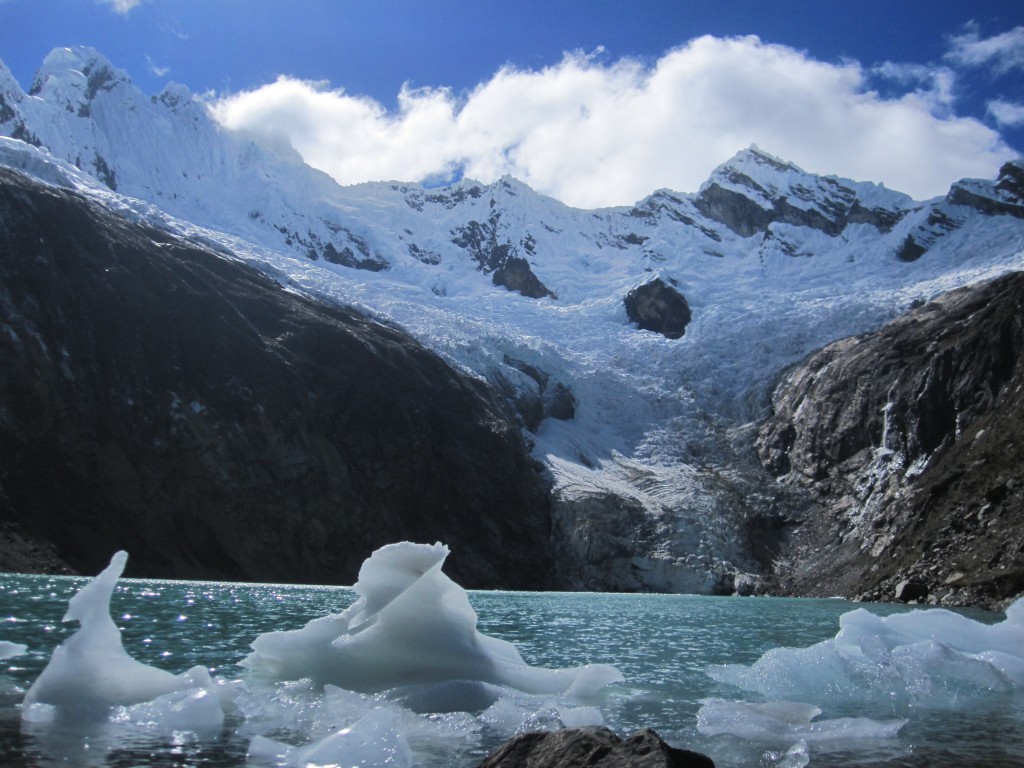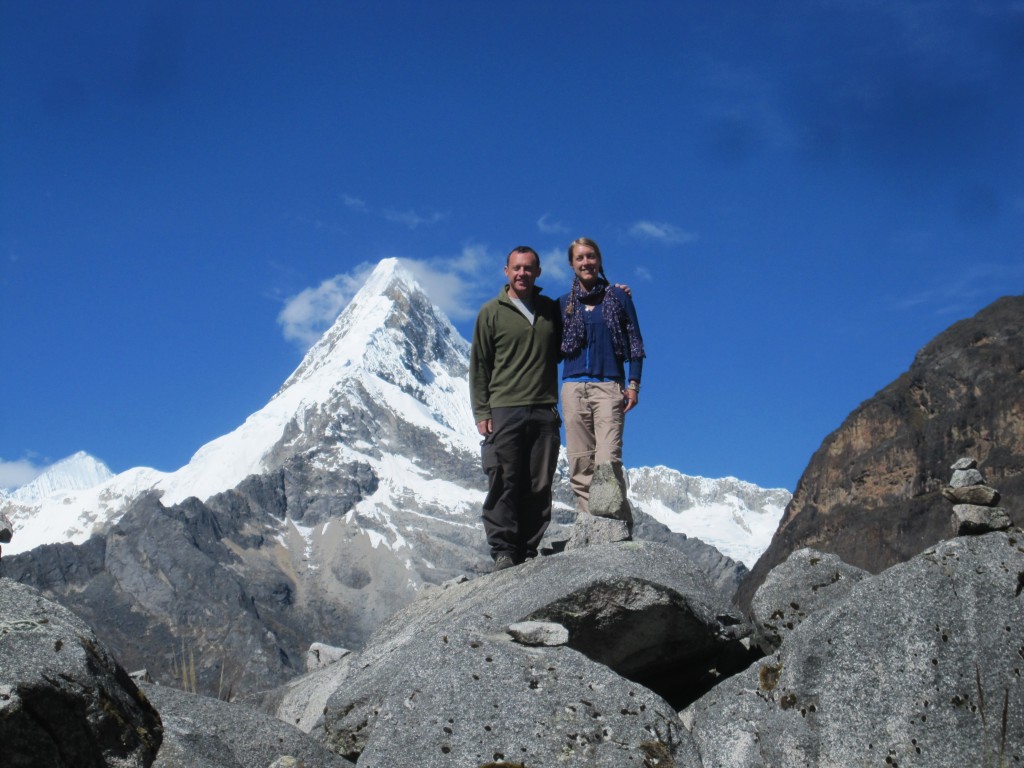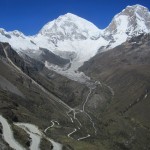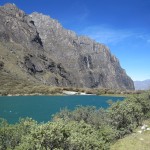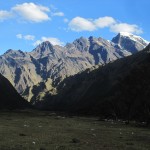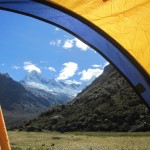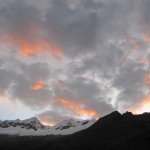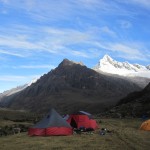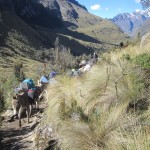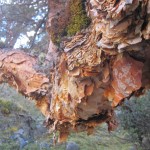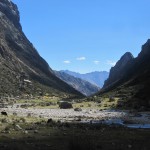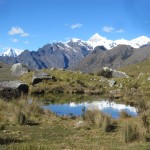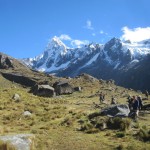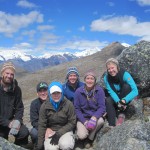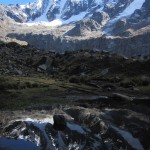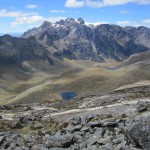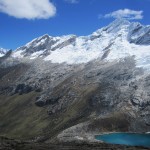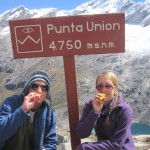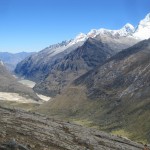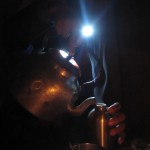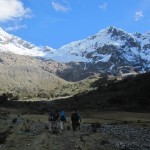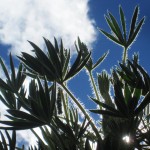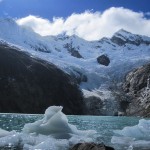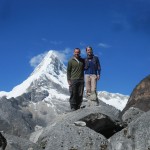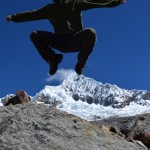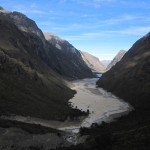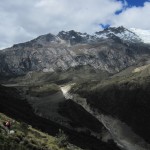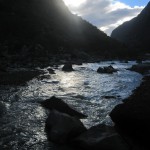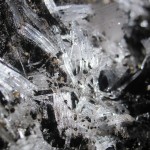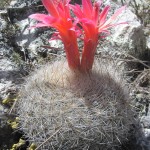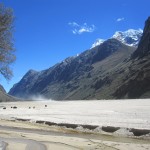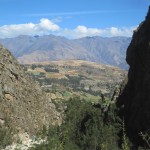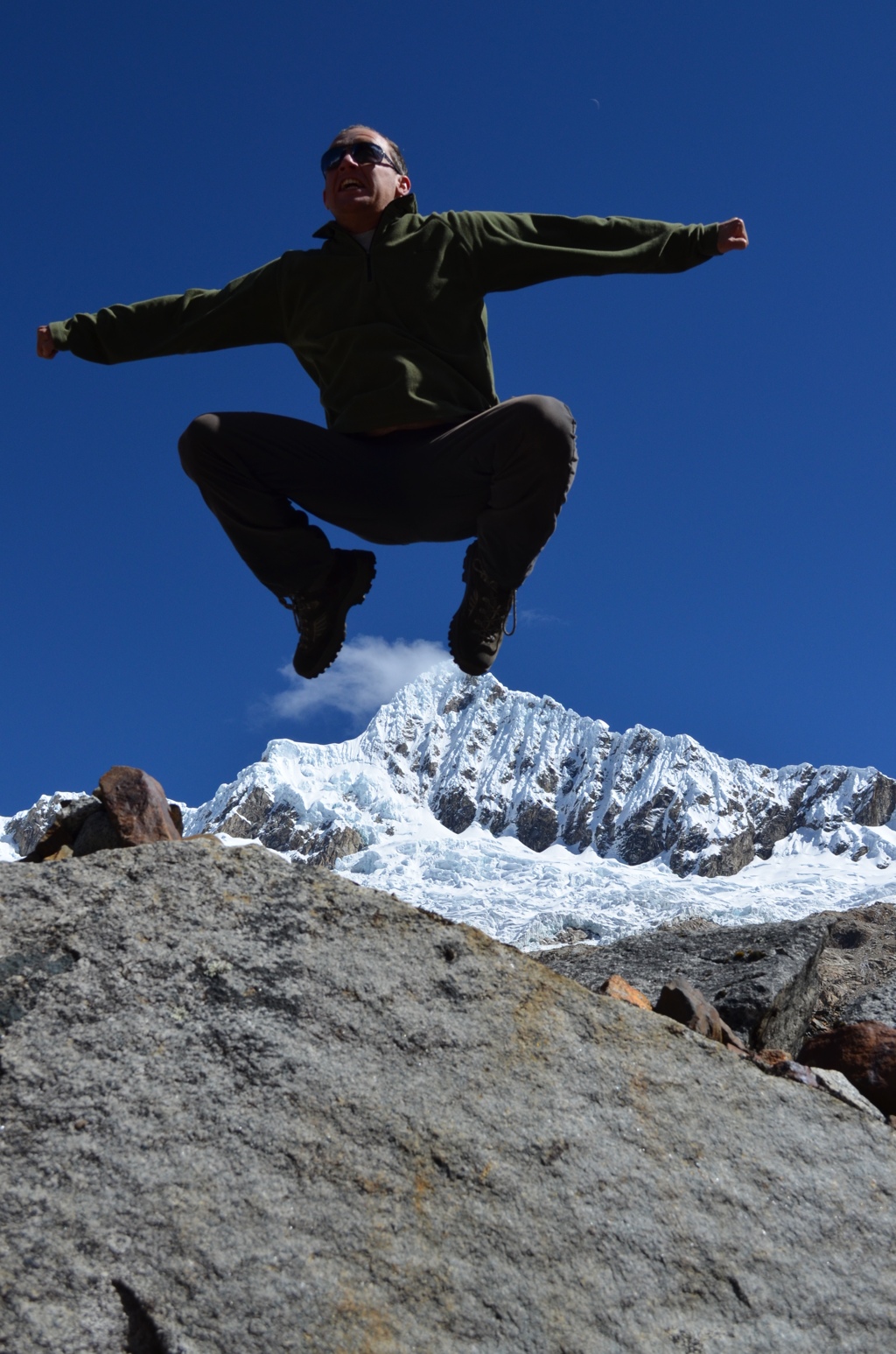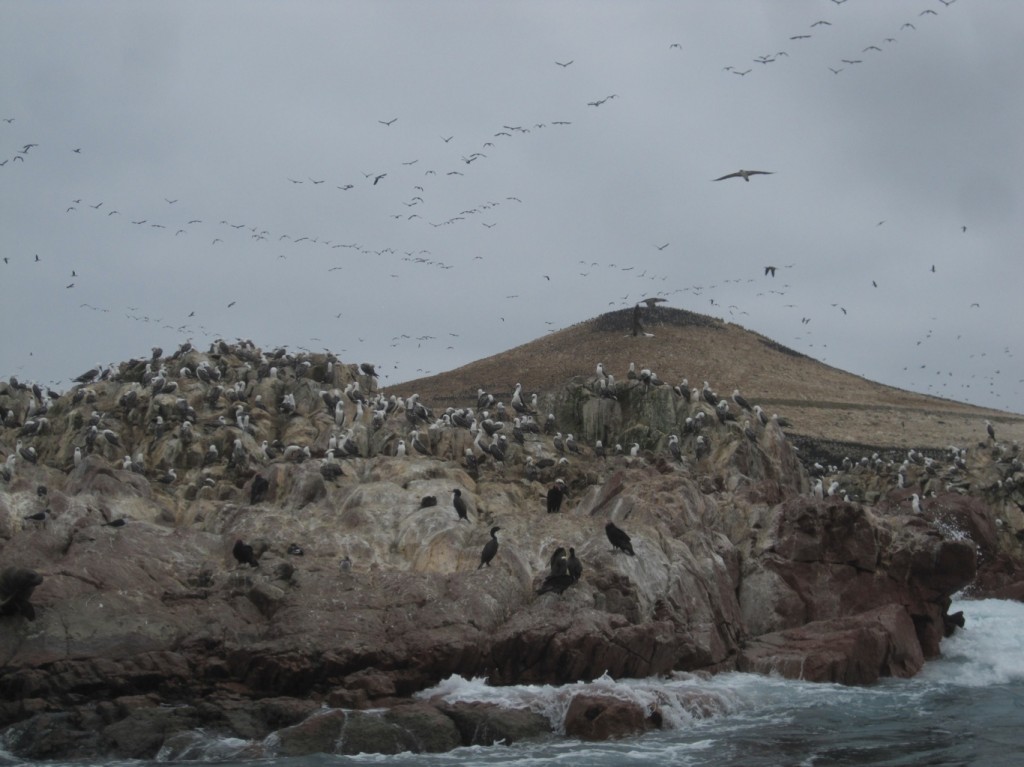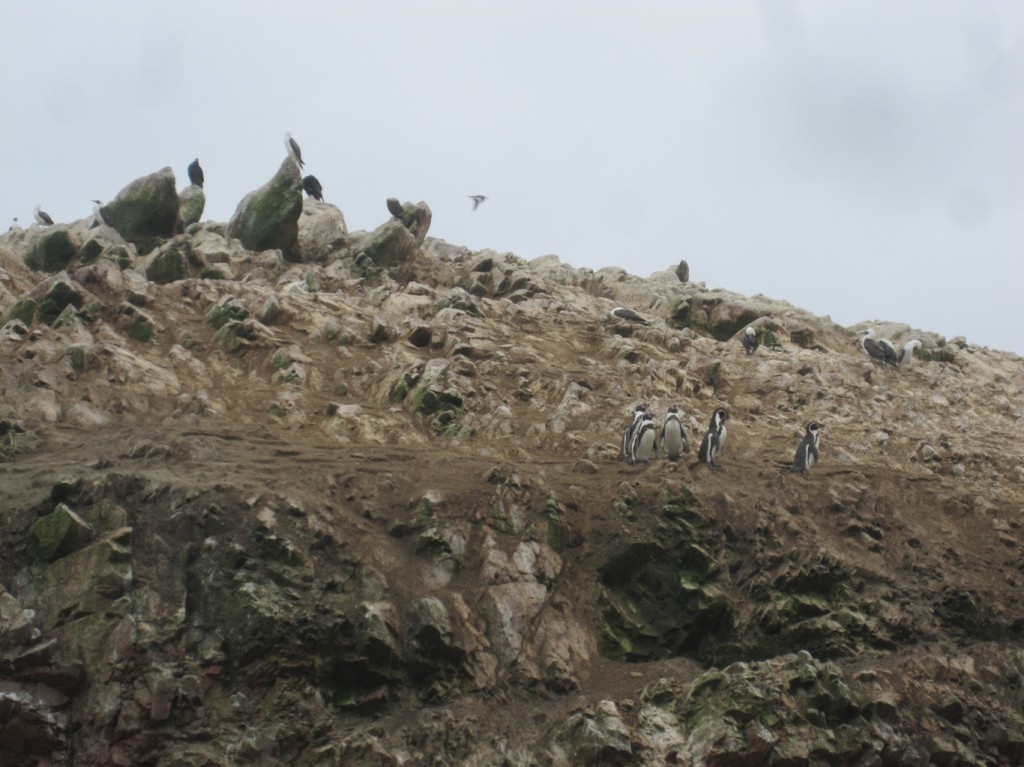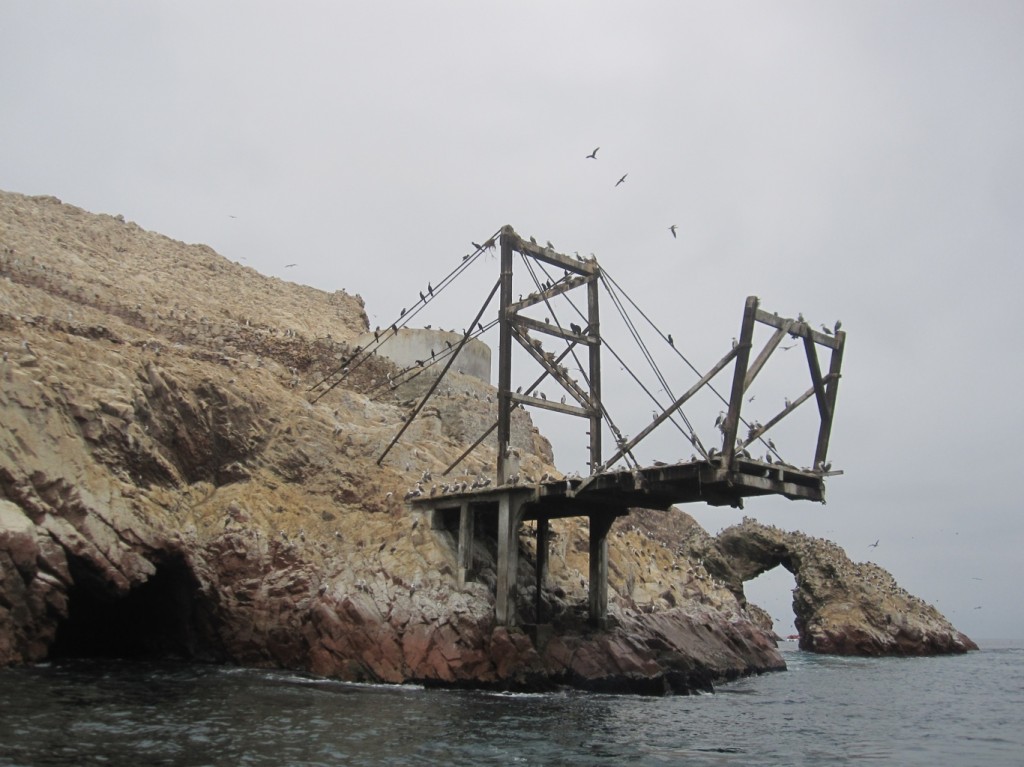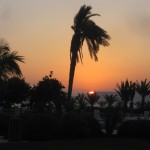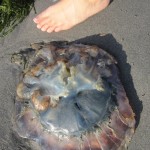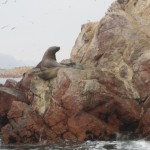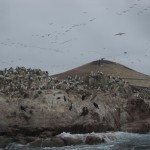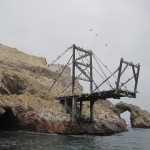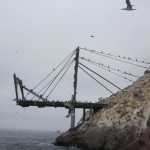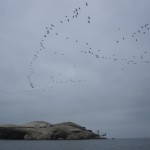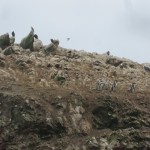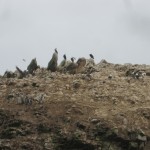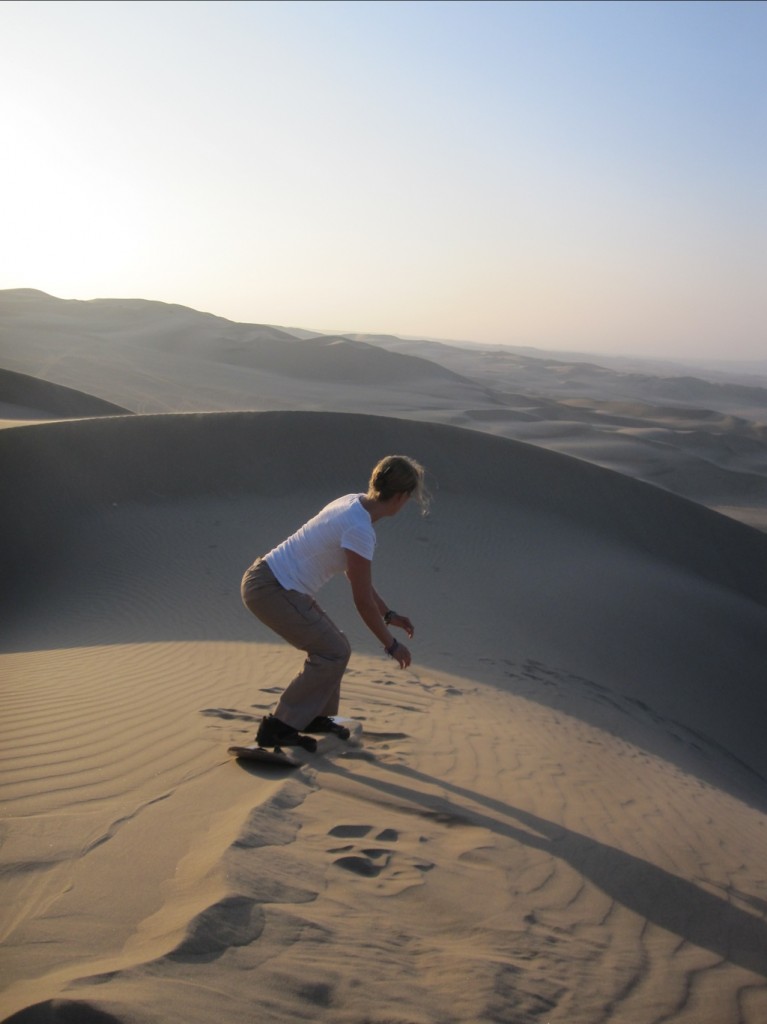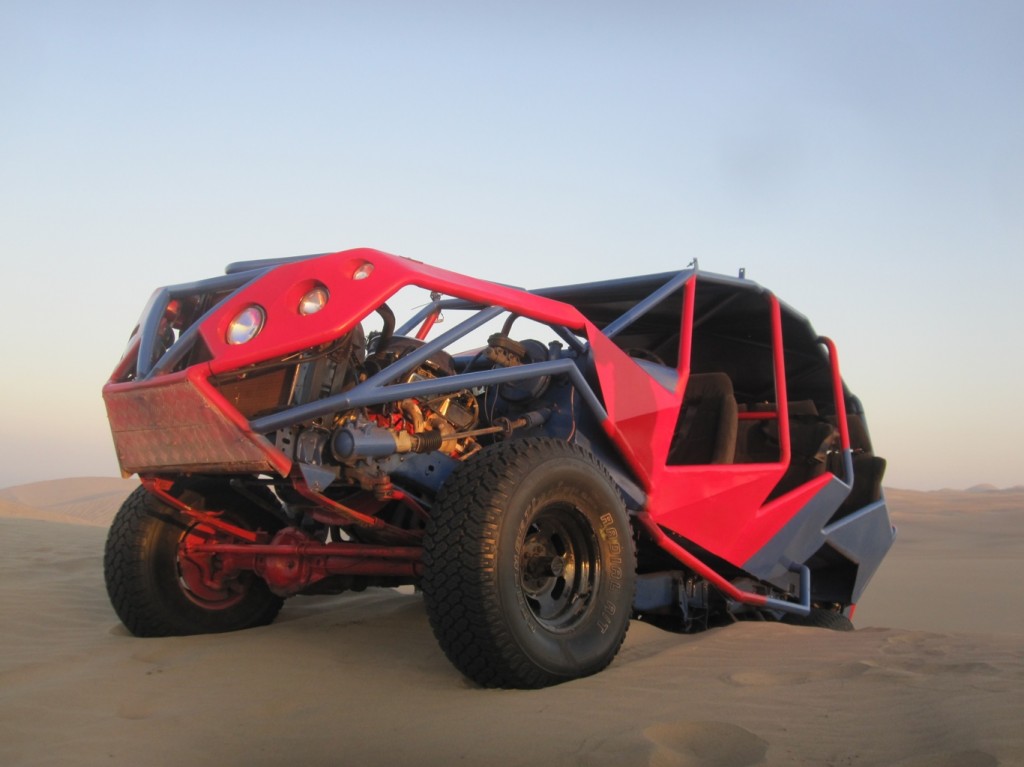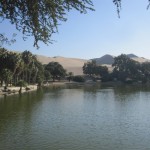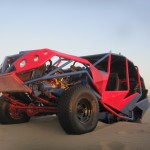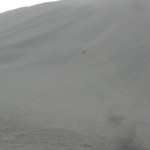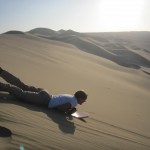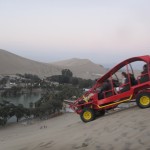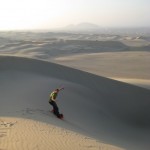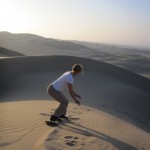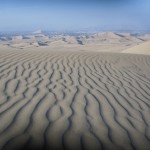Bolivia isn’t exactly a culinary paradise, that’s not to say the food is bad, just a little bland. Peru on the other hand definitely wins the prize for flavour in South America, thank you Peru for finally bringing spice back to the table! Here are some of the regional specialities from this part of this trip…
Menu del día (Bolivia and Peru)
The menu del día is the cheap way to eat in Bolivia or Peru, it is typically a two or three course meal comprised of a soup starter (often a little watery), a main of some kind of flavourless meat served with boiled potatoes and rice or pasta (if you’re lucky this might be accompanied by a sauce, if not you can liven it up with the ever present salsa picante) and a desert of tinned fruit salad or jelly. All of this is usually washed down with an unidentifiable ‘juice’, essentially sugary water. It’s a pretty no frills affair but cheap and filling.
Salchipapa (Bolivia and Peru)
Salchipapa is the kind of dish you might concoct with what’s left in your cupboard, chips mixed with chopped frankfurters, sliced onions and peppers smothered in a tomato sauce.
Quinoa soup (Bolivia)
Quinoa is a small round grain sometimes used as an accompaniment similar to rice. It’s a nice way to bulk up the often thin vegetable soups served in Bolivia.
Trucha (Bolivia and Peru)
I believe that trucha (trout) fresh from lake Titicaca is one of the nicest Bolivian dishes we encountered. It can be found cooked in all manner of ways, but my favourite was probably trucha grilled in a lemon sauce.
Chifa (Bolivia and Peru)
Chifas are Chinese restaurants of varying quality found throughout Bolivia and Peru (although probably more prominently in Peru). A refreshing alternative to the ubiquitous meat and rice (although you can of course find dishes containing both of these constituents, just with more flavour than usual!).
Ceviche (Peru)
The best dish I have tasted in months! I have to admit I was skeptical, I’m not a fan of sushi and to be honest the idea of eating raw fish doesn’t really appeal to me. Ceviche has definitely changed that! Ceviche is raw fish marinated in a chilli and lime sauce topped with raw onions and served with a side of sweet potato and giant sweetcorn (seriously -the sweetcorn in Peru is huge!), a dish packed with tongue-tingling flavour, definitely one not to be missed.
Rocoto relleno (Peru)
Another fine example of tasty Peruvian food, the spicy red peppers are stuffed with minced beef, onions, diced boiled egg and plenty of seasoning.
Cuy (Peru)
If you’ve ever had a pet Guinea Pig you may want to stop reading now. Yes cuy is roasted or fried Guinea Pig. Whilst the crunchy skin is nicely flavoured with herbs and spices, as might be expected there’s not a lot of actual meat to be had on this Peruvian delicacy!
Pisco sour (Peru)
Peru’s most famous cocktail made from Pisco (grape brandy), lime juice, bitters, sugar and egg whites is a real treat and impossible to avoid!
With only four weeks left until we re-enter the world of cheddar cheese, marmite and salt and vinegar crisps (seriously, these are the things I miss!) I wonder what Colombia and Cuba have in store…
Laura
- Food at a Peruvian market
- Chicken, I think, red sauce, and pasta
- Quinola soup
- One of the best meals we had in Bolivia… fondue!
- Guinea Pigs are tasty food here…
- Restaurant-style cuy
- Not mentioned above, but the drink of choice for Peruvians. It tastes as yellow and artificial as it looks…
- Spicy and stuffed, perfect
- A dish of the gods
- Enjoying a pisco sour… and yet more ceviche!
- So tasty!
- Fresh fruit salad from the market in Sucre, Bolivia

